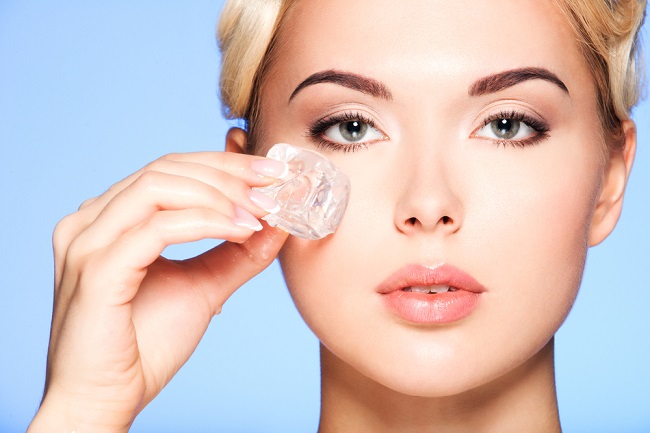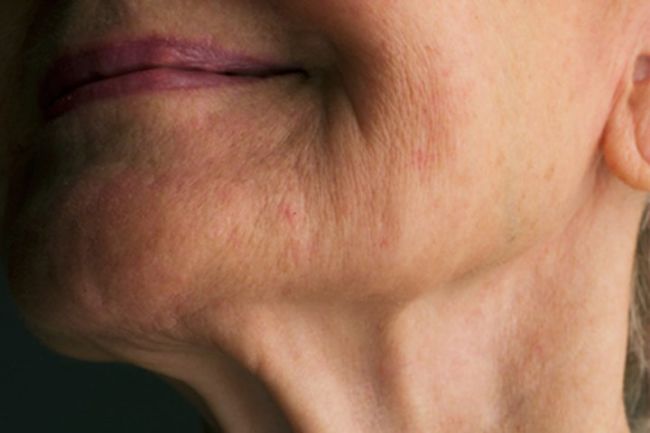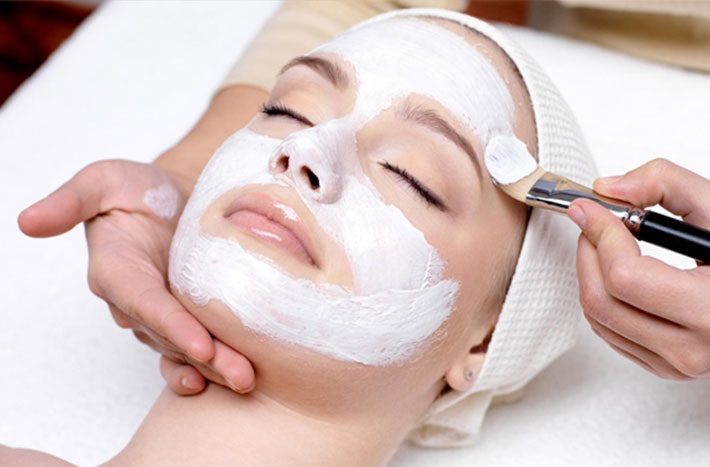White spots on the skin can be caused by a number of reasons, and the size of them can range from small white spots to large white spots. This discoloration of the skin can appear anywhere on the body including the neck, shoulders, upper back, pimples, and forearms.

This discoloration of the skin is usually the result of a loss of skin pigmentation and can affect anyone regardless of their sex and skin color. However white spots are more noticeable if you have darker skin due to the obvious contrast between dark skin and spots.
White spots on the skin causes and possible treatments
There are a number of causes for white spots on the skin such as vitiligo, infections, autoimmune diseases, allergies, or damaged skin. There are also a number of remedies that can help reduce the appearance of these spots or white dots.
The medical name of these white spots on the skin is hyperpigmentation. These spots appear when there is a reduction in melanin production in the skin. Melanin is the pigment that gives color to our skin, hair and eyes.
Let’s take look at the most common causes of white spots on the skin and possible solutions that can help reduce their appearance.
White spots from skin damage
Skin damage is one of the most common causes of white spots. This can be caused by burns, sun damage, acne, or any other reason that causes skin damage. This is sometimes called post-inflammatory hyperpigmentation.
If you’ve suffered any kind of skin damage, it’s important that you take a skin treatment as soon as possible. This can help prevent damage to the melanocytes that form melanin and help prevent hyperpigmentation.
Aloe vera and Scottish Elm to prevent white spots on damaged skin
An excellent way to treat damaged skin is to apply aloe vera gel directly to the affected area. Aloe vera contains anti-inflammatory, antioxidant and antimicrobial properties. It also provides the skin with moisture that acts as a barrier against other skin damage and has many other benefits for the health of your skin.
To use aloe vera to treat damaged skin and help prevent the appearance of white spots, all you have to do is apply aloe vera gel to the affected area 3 times a day.
Another effective natural remedy for damaged and inflamed skin is Scottish elm. Scottish elm acts as an antibacterial, anti-inflammatory and is a natural astringent that prevents the skin from dry out. You can add a few drops of tea tree oil and lavender oil to 30 ml of Scotch elm. Then, using a cotton ball, apply the mixture to the affected area.
Eczema or psoriasis
Eczema and psoriasis may also be reasons for white spots to appear on the skin. Research found that during an outbreak of eczema or psoriasis, proteins in cells inhibit the production of melanin that causes white spots. Then, when the inflammation sets in, the spots can become darker – this is called hyperpigmentation.
How to avoid the white spots of eczema and psoriasis
You can use aloe vera and Scotch elm water to treat eczema and psoriasis to prevent skin discoloration and white spots. You can use these 2 ingredients the same way it is used for damaged skin.
You can also use coconut oil for the treatment of eczema and if you suffer from psoriasis you can use these natural treatments.
Apple cider vinegar (VSM) is also one of the best natural treatments for eczema and also has many other skin benefits. You can mix equal parts of apple cider vinegar and water and apply to the affected area with a cotton wool. After applying the VSM you will have to moisturize the skin to prevent it from dry out. For this you can use coconut oil for eczema.
Coconut oil has antibacterial properties and the fatty acids in it nourish the skin. Studies have shown that it is a good natural ingredient for treating eczema.
Ringworm versicolor – (yeast) fungal infection
Discoloration of the skin can also be caused by pityriasis versicolor. This is a fungal infection that can discolor the skin and cause white spots. The fungus produces an acid bleach to form what changes the color of the skin. These patches do not tan and therefore appear white.
How to treat fungi on the skin to avoid white spots?
One of the best ways to treat fungal infections to prevent white spots on the skin is tea tree oil. It is highly recommended to use an antifungal bath gel, apply it to the affected area and leave it for a few minutes before rinsing. However, you can also make your own antifungal liquid bath gel by adding 8-10 drops of tea tree oil for every 30 ml of your bath gel. You can then apply it to yourself. Or, you can add a few drops of tea tree oil to a tablespoon of carrier oil and apply it to the affected area.
Other natural ingredients that can be used to treat fungal infections are:
- Coconut oil.
- Apple cider vinegar.
- Aloe vera.
Vitiligo
Vitiligo is a condition that commonly causes white spots on the skin. It causes white spots that appear on the body. Vitiligo is thought to be an autoimmune disorder that destroys pigment-forming cells in the skin.
If you suffer from vitiligo, it is very important to always protect the skin from UV radiation. This is recommended either by covering affected areas or by using a broad spectrum sunscreen with an SPF of at least 30.11. A sunscreen can not only protect your skin, but also minimize tanning. This makes the contrast between normal and discolored skin less noticeable which helps minimize the appearance of white spots, patches or spots.
Treat white spots by vitilygium
Actually, treating the white spots that are caused by vitiligo is more complicated than it seems. However, an interesting study in 1999 was conducted using phenol as a chemical desquamator. Phenol is sometimes called carbolic acid. The study reported that the hurtful action of phenol may help return the pigment to vitiligo stains.
Idiopathic guttatic hypomelanosis (HGI)
Idiopathic guttatic hypomelanosis is a condition in which white spots appear mainly on the pimples and forearms. In fact, it is not yet known for sure why HGI occurs. But it is suggested that it may be something related to UV exposure.
How to treat it?
As with vitiligo, it is recommended to use a sunscreen with a high SPF and avoid tanning beds.
A study that used phenol for skin re-pigmentation found that, in just over 3 months, the condition improved in up to 75% of the treated areas. The study concluded by saying that this can be a very convenient outpatient procedure against HGI.
Pityriasis Alba
Pityriasis Alba begins with red, scaly spots on the skin. When these spots disappear, they usually leave white or pale spots on the skin. The cause of pityriasis Alba is unknown, but it is said that it could be related to eczema and allergies.
Treatments for pityriasis white spots
Most doctors recommend the use of a topical cream to reduce dryness, flaking and keep the skin hydrated. Therefore, pityriasis Alba can be treated with natural ingredients in a manner similar to the treatment of eczema. You can try using rosehip oil or vitamin E for skin treatment and reduce dryness.
You can also use aloe vera to take advantage of its antibacterial and anti-inflammatory properties. In fact, in clinical trials, aloe vera gel has been shown to be 1% superior to hydrocortisone gel. Hydrocortisone cream is often prescribed by doctors for pityriasis Alba.
Sutton’s halo nevus
The Halo nevus of Sutton is sometimes called a lunar halo. This is due to the white area surrounding the mole. The white spot around the mole is thought to be the body’s autoimmune response to it.
It is usually not necessary to treat halo nevus, but equally, it is advisable for a dermatologist to check your mole. Always remember to apply extra sunscreen on the white spot because it will burn easier in the sun.
Lichen sclerosus
Lichen sclerosus is another condition that can cause skin discoloration and white spots. It is a rare condition that tends to affect mainly postmenopausal women, but it can also affect men.
Symptoms of lichen sclerosus are patches of white skin that are thinner than normal. It can affect any area of the body, but it mostly affects the genitals and anus. Affected areas may also experience pain and itching. Because the skin becomes thinner with lichen sclerosus, it can break and bleed more easily.
The cause of lichen sclerosus is not known, however, it could be related to an autoimmune disorder or a hormone imbalance. Lichen sclerosus is a generalized condition and if symptoms start to get worse, then it would be best to see your doctor.
Morphea causes white spots on the skin
Morphea is a rare skin condition that causes skin discoloration. Usually, there is no pain associated with these white patches and very often, the morphea goes away on its own.
It is recommended to use a good moisturizer to keep the skin hydrated and avoid long and hot baths.
Some other oils that are excellent for skin hydration are:
- Avocado oil.
- Sweet almond oil.
- Peach seed oil.
- Apricot seed oil.
- Grape seed oil.









